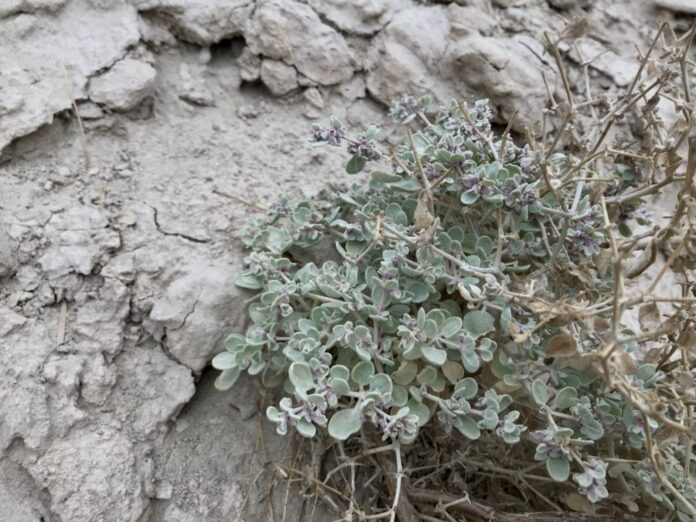The scorching landscapes of Death Valley, California, where summer temperatures routinely shatter the 120-degree Fahrenheit mark, would seem to preclude life as we know it. Yet, amidst this seemingly inhospitable crucible, a resilient native plant thrives— Tidestromia oblongifolia. This tenacious survivor has yielded valuable clues to scientists at Michigan State University (MSU), revealing a blueprint for engineering crops that can withstand the intensifying heat of our changing climate.
Published in the journal Current Biology, research conducted by Professor Seung Yon “Sue” Rhee and Research Specialist Karine Prado unveils how T. oblongifolia not only survives but flourishes under extreme conditions.
The researchers were initially baffled by the plant’s resilience. “When we first brought these seeds back to the lab, we struggled just to get them to grow,” Prado recalled. However, by recreating the unforgiving environment of Death Valley in specialized growth chambers at MSU’s Plant Resilience Institute, they witnessed a startling transformation: T. oblongifolia rapidly tripled its biomass within a mere 10 days. In stark contrast, related species known for their heat tolerance ground to a halt under these extreme conditions.
Within just two days of exposure to scorching temperatures, this desert dweller significantly elevated its photosynthetic comfort zone – the temperature range at which it can effectively produce energy through photosynthesis. Within a fortnight, its optimal photosynthetic temperature soared to 45 degrees Celsius (113 degrees Fahrenheit), exceeding that of any major crop species ever documented. This remarkable heat tolerance catapults T. oblongifolia into the record books as the most heat-resilient plant known to science.
The Secrets of Survival: A Symphony of Adaptations
Delving deeper, the researchers combined physiological measurements with advanced imaging and genomic analysis to decipher the intricate mechanisms underpinning T. oblongifolia’s remarkable adaptation. They uncovered a coordinated cascade of biological changes occurring across multiple levels within the plant.
Under intense heat, its energy-producing organelles (mitochondria) strategically reposition themselves adjacent to chloroplasts – the sites of photosynthesis. The chloroplasts themselves undergo dramatic structural alterations, morphing into distinctive “cup-like” configurations unseen in other higher plants. This novel morphology may enhance carbon dioxide capture and recycling, effectively stabilizing energy production even under extreme stress.
Simultaneously, thousands of genes within the plant’s genome spring into action or are silenced within just 24 hours. Many of these genes play crucial roles in safeguarding proteins, cell membranes, and the machinery responsible for photosynthesis from heat damage. Notably, T. oblongifolia significantly amplifies production of Rubisco activase – a key enzyme vital for maintaining smooth photosynthetic function at high temperatures.
From Desert to Dinner Plate: A New Frontier in Crop Improvement
As global temperatures inch relentlessly upwards, heat waves are wreaking havoc on agricultural yields for staple crops like wheat, maize, and soybeans. Feeding an ever-expanding global population hinges on bolstering food production in the face of these intensifying climatic challenges.
“T. oblongifolia demonstrates that plants possess a remarkable capacity to adapt to extreme temperatures,” Rhee emphasizes. “If we can decipher how it accomplishes this feat and replicate those mechanisms in our crops, we could revolutionize agriculture in a warming world.”
Rhee argues that studying extremophiles like T. oblongifolia, rather than relying solely on traditional model species for plant research, opens up entirely new avenues for bolstering resilience. “Desert plants have honed their adaptations over millions of years to conquer the very challenges we’re now grappling with,” she explains. “We possess the cutting-edge tools – genomics, high-resolution live imaging, and systems biology – to unlock their secrets.”
What remains crucial is sustained investment in this type of groundbreaking research. Rhee’s lab is actively translating these findings into practical applications, exploring how the genes and cellular structures that enable T. oblongifolia’s heat tolerance might be incorporated into staple crops, paving the way for a more resilient future for global food security.
“This research transcends mere biological curiosity,” Prado asserts. “It offers us a roadmap for harnessing nature’s ingenuity to empower plants – and ultimately humanity – to thrive amidst a changing climate.”







































































